Queen Elizabeth’s School Headmaster Neil Enright met the King when he attended a garden party at Buckingham Palace.
Mr Enright was representing QE at the afternoon event, hosted by the King, accompanied by Queen Camilla. It was organised to ‘celebrate and recognise those working in Education and Skills’. Mr Enright was nominated to attend by Martin Russell, Representative Deputy Lieutenant of the London Borough of Barnet, and a former QE parent.
Mr Enright said: “It was an honour to represent my exceptional colleagues – present and past – at the garden party. It was particularly special to share a moment with His Majesty on the lawn when he made a slight detour from his route to the Royal Tea Tent.
“I had the opportunity to shake hands and tell him something about Queen Elizabeth’s School. He seemed delighted to know that The Duke of Gloucester had visited us in High Barnet during our year celebrating 450 years since our foundation. As we parted, the King generously wished the School a (belated) Happy Birthday!
“It was really good fun and I was very lucky to speak to the King. The weather was perfect, too!”
Every summer, the Sovereign holds three garden parties at Buckingham Palace, and one at the Palace of Holyroodhouse in Scotland. Having originally begun as a replacement for presentation parties attended by debutantes, the garden parties have evolved into a way of recognising and rewarding public service. They provide an opportunity for members of the Royal Family to meet people from all walks of life who have made a positive impact in their community.
The Headmaster thanked Mr Russell both for the nomination and for all that he and his family have contributed to support the School’s work in the past 23 years.
Mr Enright joined the Geography department at QE in September 2002. In September 2011, he was appointed the 40th Headmaster of the School. Before that appointment, he held positions as Deputy Headmaster, Assistant Headmaster, Head of Year and Head of Geography.
- Click on the thumbnails below to view the images.



 The programme, Barristers: Fighting For Justice, shows Matthew (OE 1993–2000), a criminal defence barrister, defending a taxi driver facing a 15-year prison sentence as he is accused of transporting cocaine worth £1m as part of an international drugs conspiracy.
The programme, Barristers: Fighting For Justice, shows Matthew (OE 1993–2000), a criminal defence barrister, defending a taxi driver facing a 15-year prison sentence as he is accused of transporting cocaine worth £1m as part of an international drugs conspiracy.

 Musicians from five ensembles performed for pupils and staff on the Stapylton Field lawn, with senior boys enjoying the chance to participate just ahead of the examination season.
Musicians from five ensembles performed for pupils and staff on the Stapylton Field lawn, with senior boys enjoying the chance to participate just ahead of the examination season. “That royal message of peace – and the need to actively work for it and in its defence –resonates today,” said Mr Enright.
“That royal message of peace – and the need to actively work for it and in its defence –resonates today,” said Mr Enright. The concert came in a busy period for QE’s musicians, with the Chamber Choir spending the eve of the VE Day anniversary singing Evensong at St George’s Chapel, Windsor.
The concert came in a busy period for QE’s musicians, with the Chamber Choir spending the eve of the VE Day anniversary singing Evensong at St George’s Chapel, Windsor. With the threat of bombing lifted, protective boards on doors and windows were swiftly removed and sandbags discarded. Such activities seemed like “a production by the Dramatic Society – such as few of us can now remember”, the editorial continued.
With the threat of bombing lifted, protective boards on doors and windows were swiftly removed and sandbags discarded. Such activities seemed like “a production by the Dramatic Society – such as few of us can now remember”, the editorial continued.